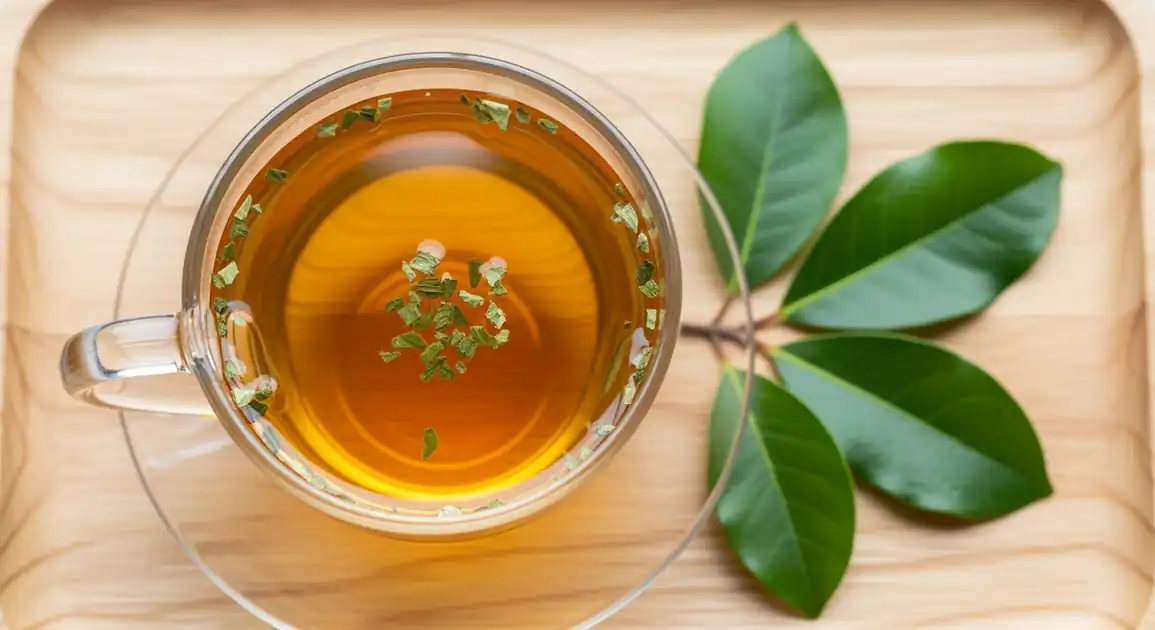Kawakawa Tea
Kawakawa Tea

Description
Auckland, New Zealand's largest city, offers diverse opportunities to experience kawakawa tea through its markets, specialty stores, cultural attractions, and growing indigenous food scene. The city's vibrant mix of traditional Māori culture and contemporary wellness trends has created unique kawakawa experiences not found elsewhere.
Dietary Information
Serving information
Serving style
In Auckland cafes, often served in contemporary teaware with honey on the side. At markets and cultural venues, may be served in more traditional vessels or disposable cups for sampling.
Quick facts
Markets typically operate 6 AM - 12 PM (Otara Market on Saturdays), specialty shops 9 AM - 6 PM, cafes 7 AM - 4 PM.
Safety Tips
What to Look For
-
Proper identification of kawakawa leaves
Ensure leaves have the characteristic heart shape and often small holes from looper moths. Kawakawa leaves should never be confused with other plants.
-
Kawakawa sourced from unpolluted areas
Quality tea comes from leaves harvested away from roads, industrial areas, or places with heavy pesticide use.
-
Cultural knowledge and respect
Vendors who understand the cultural significance of kawakawa typically handle and prepare it appropriately.
-
Clear, golden to greenish-brown liquid
The brewed tea should have a translucent color without cloudiness or odd particles.
What to avoid
-
Exaggerated health claims
Be wary of vendors making specific medicinal claims or selling kawakawa as a 'miracle cure.'
-
Extremely bitter or unpleasant taste
While kawakawa naturally has some bitterness, excessive bitterness may indicate improper preparation or poor-quality leaves.
-
Unknown sourcing
Avoid vendors who cannot explain where and how their kawakawa is harvested or processed.
-
Discolored, moldy, or unusually spotty leaves
Quality dried kawakawa should maintain some green color and shouldn't appear moldy, excessively brown, or have unusual discoloration.
Price information
Price range
Budget tips
- Auckland Night Market and Otara Market offer more affordable kawakawa products than city center shops.
- Some Auckland libraries and community centers occasionally host free rongoā Māori workshops including kawakawa tea tasting.
- Cafes in central Auckland typically charge 5-7 NZD for a cup, while specialty tea shops sell dried leaves from 10-30 NZD depending on quantity and packaging.
- Cultural experiences at Auckland Museum sometimes include complimentary tastings.
Value indicators
- Knowledge of traditional harvesting from clean, sustainable sources.
- Fresh or properly stored dried leaves with good color retention.
- Products from Māori-owned businesses with direct harvesting relationships.
- Information about specific harvesting locations around Auckland or Northland regions.
Where to Find This Dish
Auckland CBD
Several specialty tea shops and health food stores carrying quality kawakawa products.
Queen Street, High Street, Britomart
Business hours (9 AM - 6 PM)
Otara Market
Saturday morning market featuring several vendors selling traditional Māori herbs and remedies including kawakawa.
Newbury Street, Otara
Saturday Morning (6 AM - 12 PM)
Auckland Night Market
Rotating night markets throughout Auckland often feature stalls selling kawakawa and other native plant products.
Various locations including Sylvia Park, Pakuranga, CBD
Evening (5 PM - 11 PM)
Auckland Museum
The museum shop and sometimes cafe offer quality kawakawa products and occasional tastings.
Auckland Domain
10 AM - 5 PM
Vendor Tips
- Ask Auckland vendors where their kawakawa is harvested - quality sources include Waitakere Ranges, Northland, or Waiheke Island.
- Look for vendors who can explain the different properties of kawakawa from different regions around Auckland.
- Vendors who also sell other rongoā Māori plants often have better knowledge of traditional practices.
- Some Auckland cafes featuring kawakawa tea employ Māori staff who can share cultural context.
How to Order
Regional Variations
-
Auckland Cafe Style
(City Blend)
Urban cafes often serve milder versions, sometimes mixed with complementary flavors like lemongrass or ginger to appeal to diverse palates.
-
Traditional Auckland Māori Preparation
(Tāmaki Makaurau Rongoā)
Prepared by Auckland Māori practitioners according to traditional methods, often stronger and served with specific wellness intentions.
-
Waiheke Island Kawakawa
(Kawakawa o Waiheke)
Tea made from kawakawa harvested on Waiheke Island is considered to have a distinctive character due to the island's terroir, available from some specialty vendors.
-
Waitakere Blend
(Wai Whakatipu Kawakawa)
Kawakawa from the Waitakere Ranges west of Auckland is known for its robust flavor and is often handled by vendors with sustainable harvesting practices.
Cultural context
History
Kawakawa has deep cultural significance in Māori tradition, being considered a taonga (treasure) and valued for both medicinal and spiritual purposes. The plant's use dates back centuries, with kawakawa leaves being used in healing rituals, for pain relief, and digestive health. Kawakawa branches are also used in pōwhiri (welcome ceremonies) and other cultural practices. European settlers later adopted some of these traditions, and today the tea is enjoying renewed popularity as interest in indigenous knowledge and natural wellness grows throughout New Zealand.
Local significance
In Auckland, kawakawa tea represents both traditional Māori knowledge and the city's growing interest in indigenous food and wellness. It bridges cultural education and contemporary health trends, making it increasingly visible in the city's food and beverage scene.
Eating customs
- In Auckland cafes, often served with a story about its traditional uses.
- At cultural events, may be prepared with more ceremony and cultural context.
- Auckland's fusion cuisine scene occasionally incorporates kawakawa in modern beverage innovations.